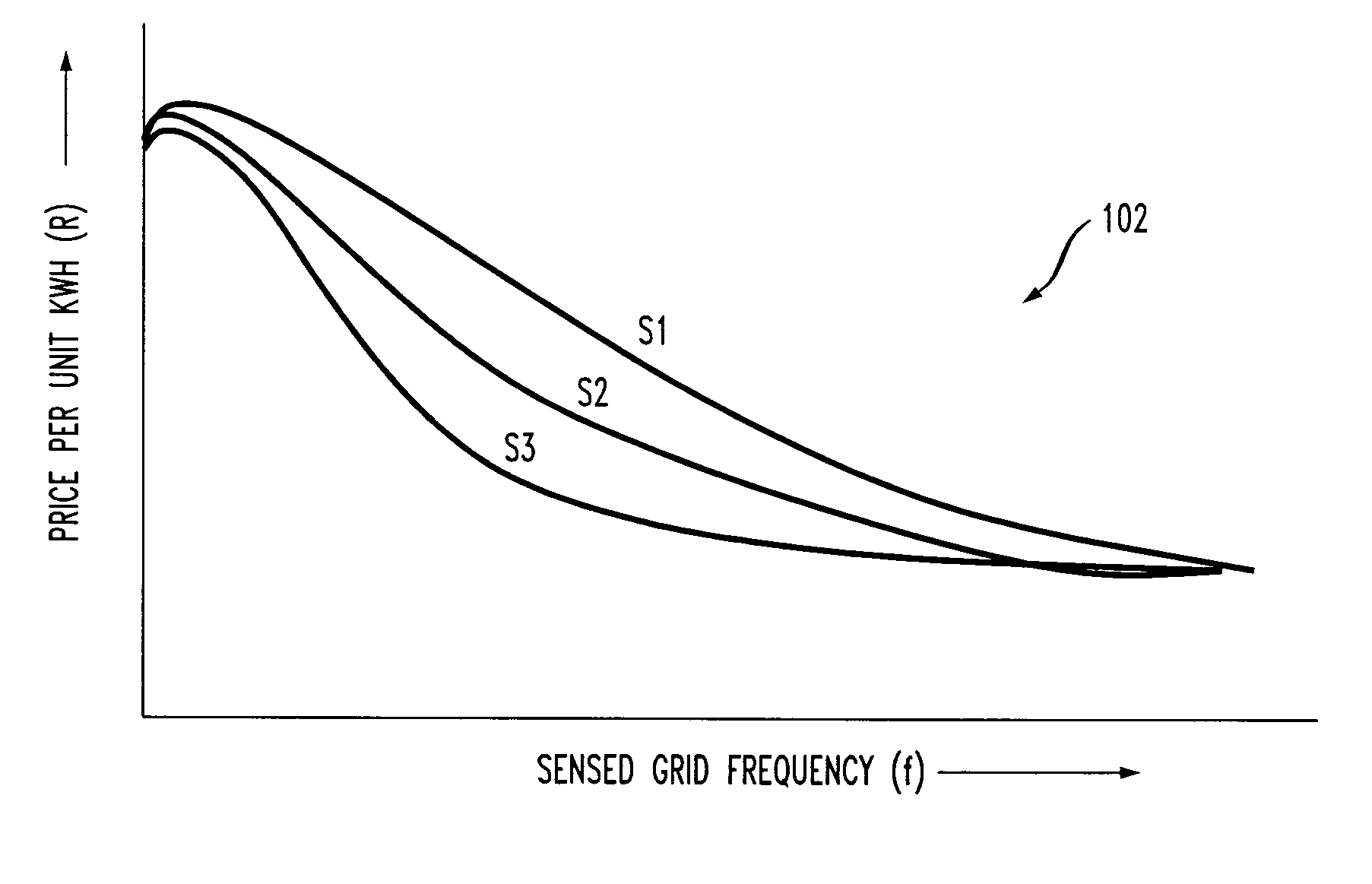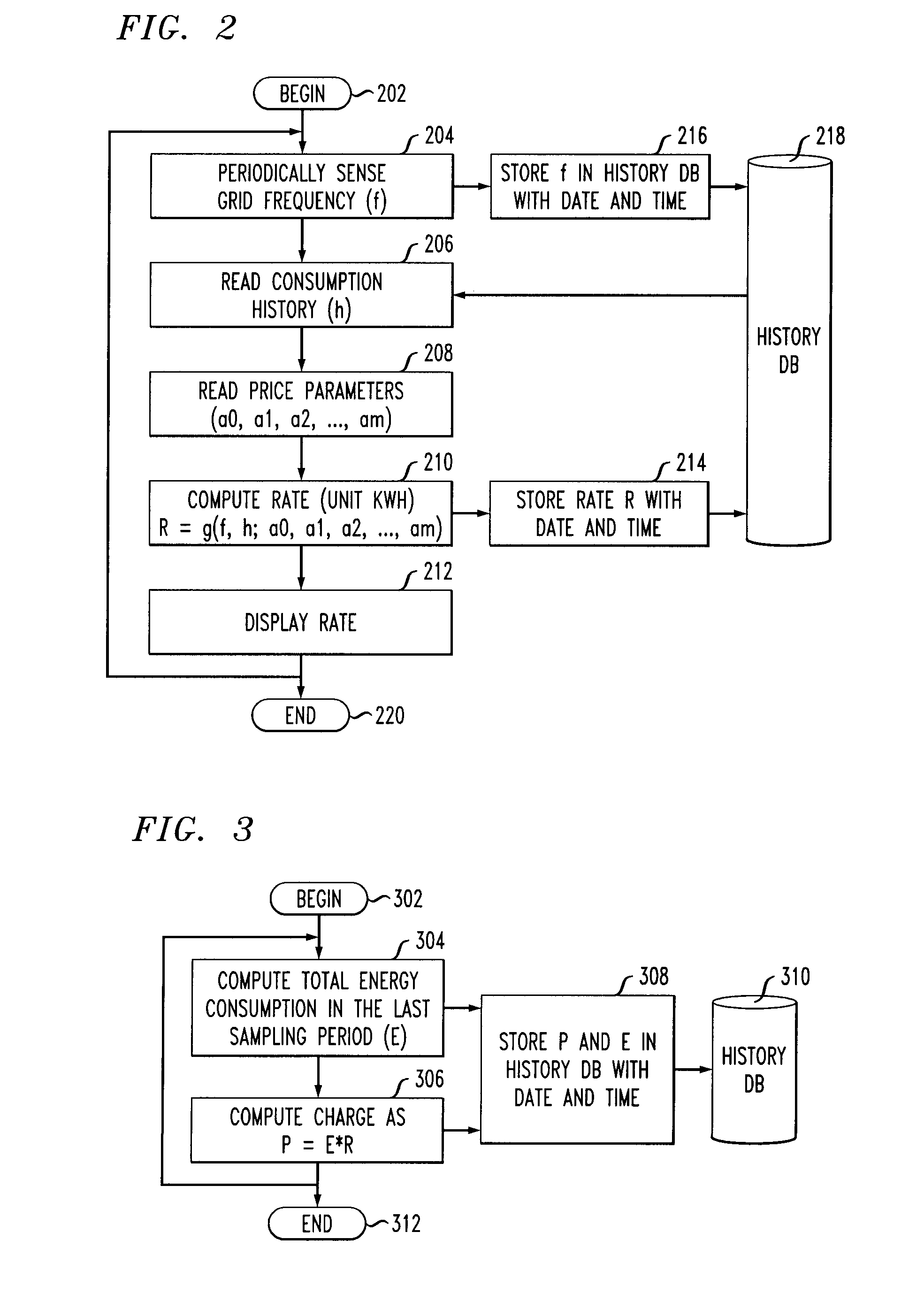Self-Organizing Energy Pricing
a technology of energy pricing and self-organization, applied in the field of information technology, can solve the problems of utility inability to pass price increases along to customers without regulatory approval, financial disaster, and inability to isolate utilities from these fluctuations
- Summary
- Abstract
- Description
- Claims
- Application Information
AI Technical Summary
Benefits of technology
Problems solved by technology
Method used
Image
Examples
Embodiment Construction
[0014]Principles of the invention include self-organizing energy pricing. In existing approaches, the peak load of all customers coincide to create huge load peaks. One or more embodiments of the invention include reducing the peak load by distributing the peak loads of individual customers across the day. In a typical price sensitivity curve, as the price increases, probability of usage reduces. As such, price sensitivity for electric energy is in between fully elastic (such as, for example, drinking water) and fully inelastic (such as, for example, fast food).
[0015]One or more embodiments of the invention include a real time pricing system that includes the following properties. Such a system recomputes the energy price within a few minutes of a change in load. The system works in a decentralized fashion to minimize the computation and communication resource requirements and to avoid any single point of failure. Additionally, such a system can implement a stratified pricing system...
PUM
 Login to View More
Login to View More Abstract
Description
Claims
Application Information
 Login to View More
Login to View More - R&D
- Intellectual Property
- Life Sciences
- Materials
- Tech Scout
- Unparalleled Data Quality
- Higher Quality Content
- 60% Fewer Hallucinations
Browse by: Latest US Patents, China's latest patents, Technical Efficacy Thesaurus, Application Domain, Technology Topic, Popular Technical Reports.
© 2025 PatSnap. All rights reserved.Legal|Privacy policy|Modern Slavery Act Transparency Statement|Sitemap|About US| Contact US: help@patsnap.com



